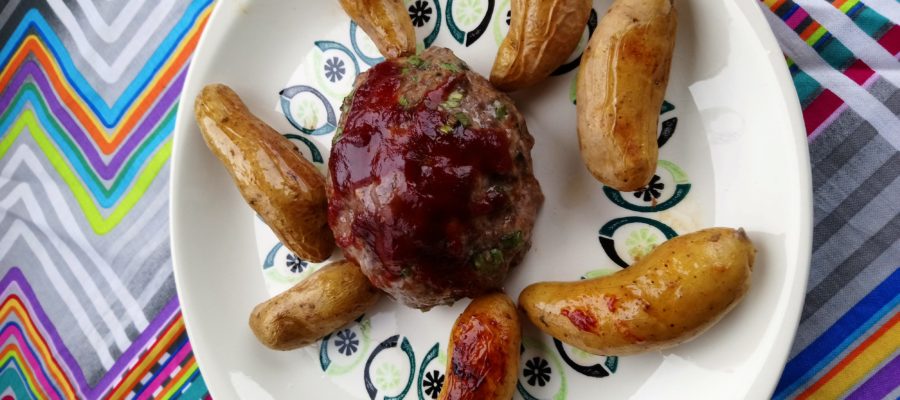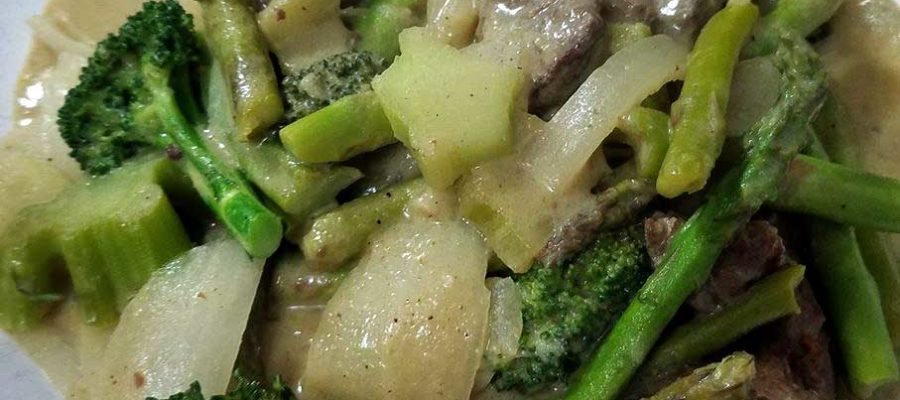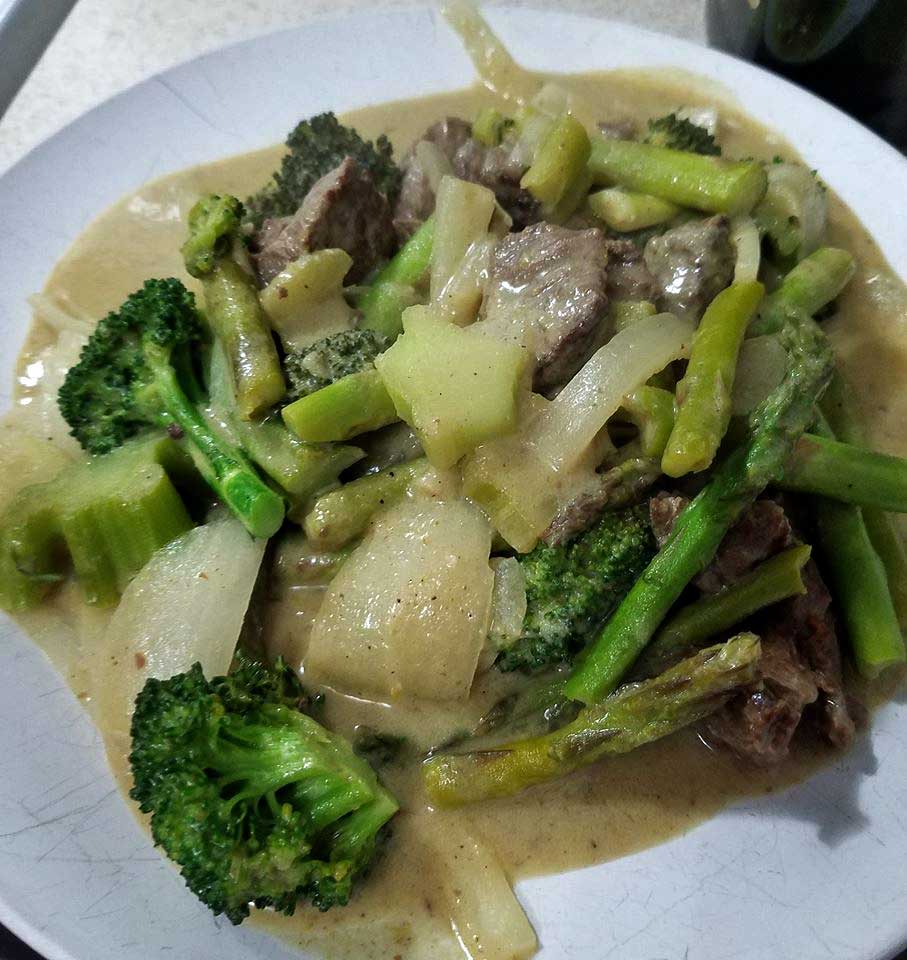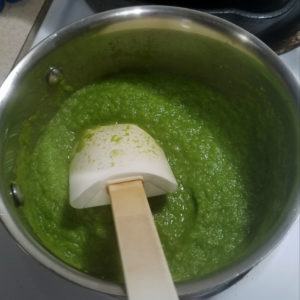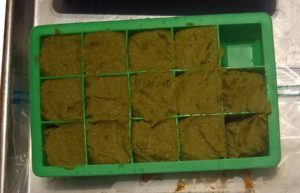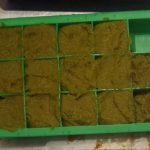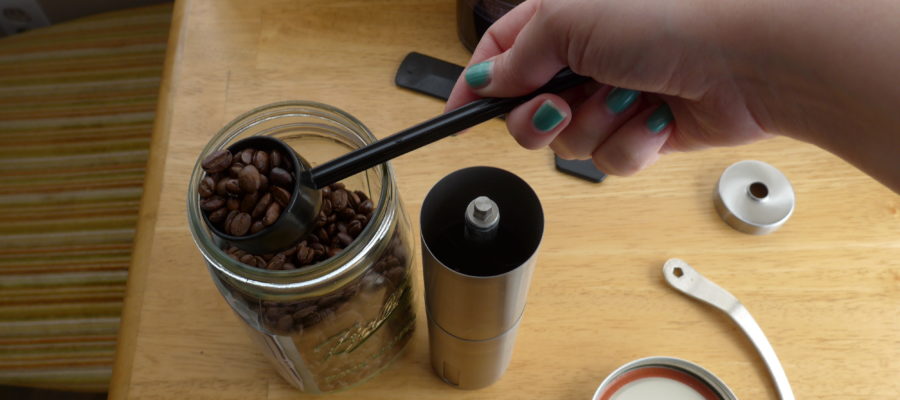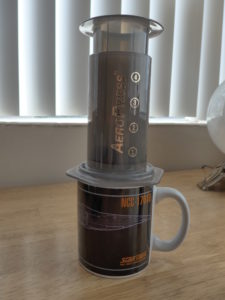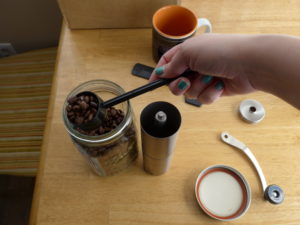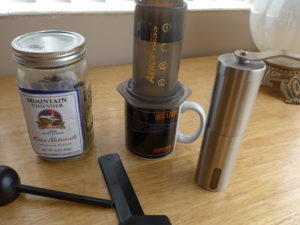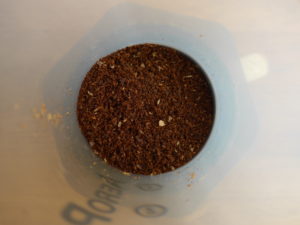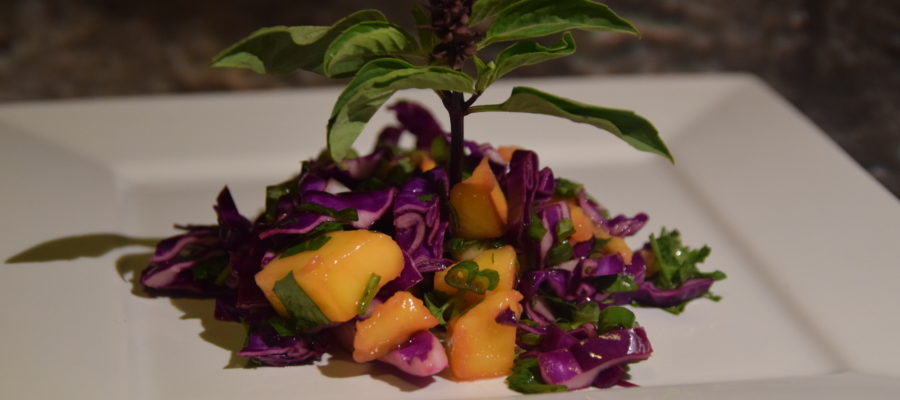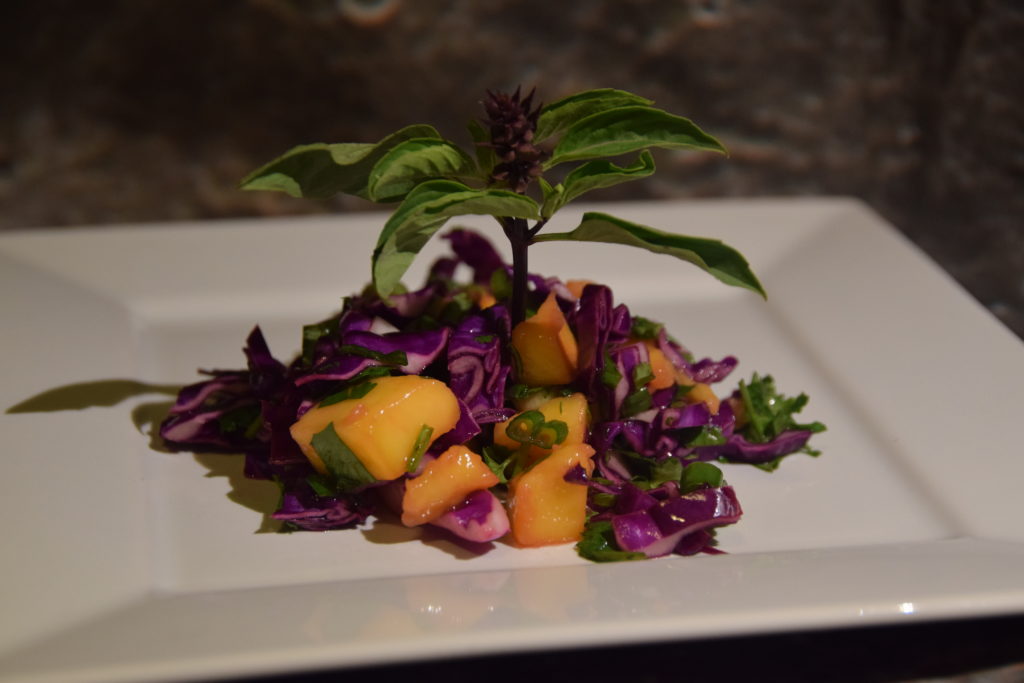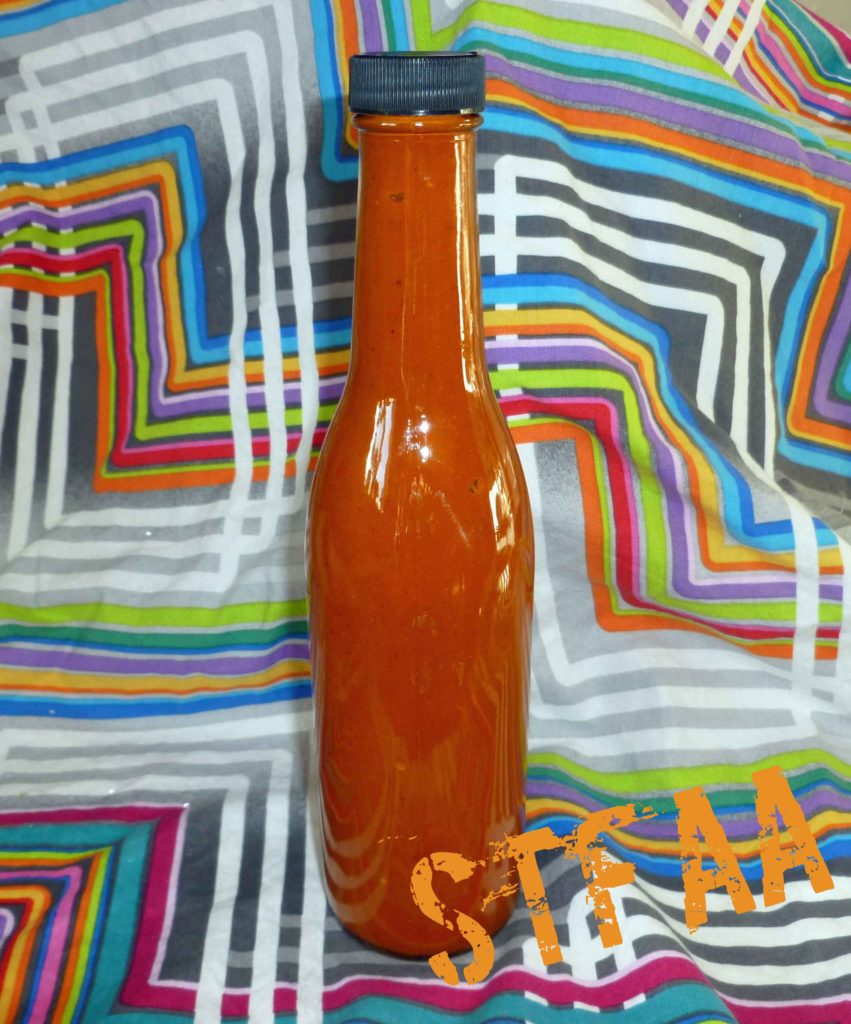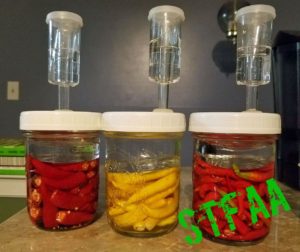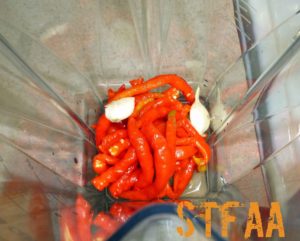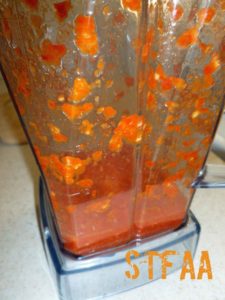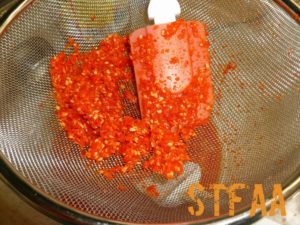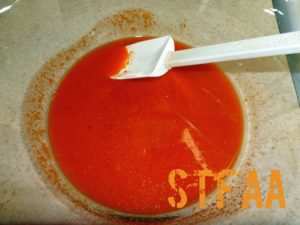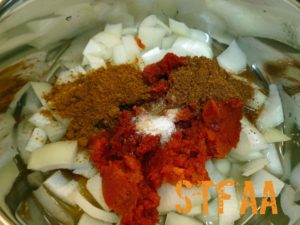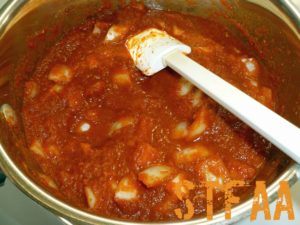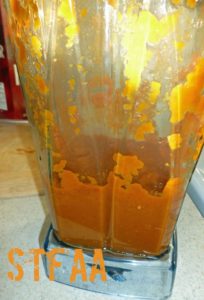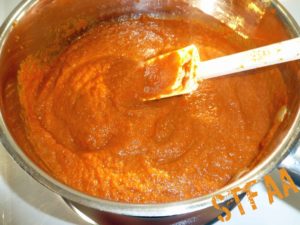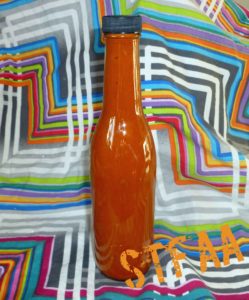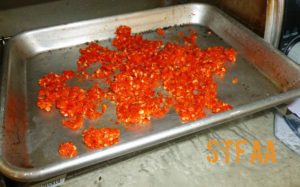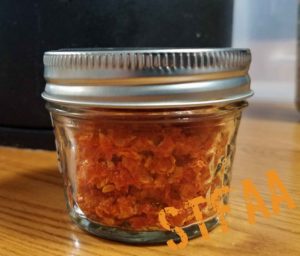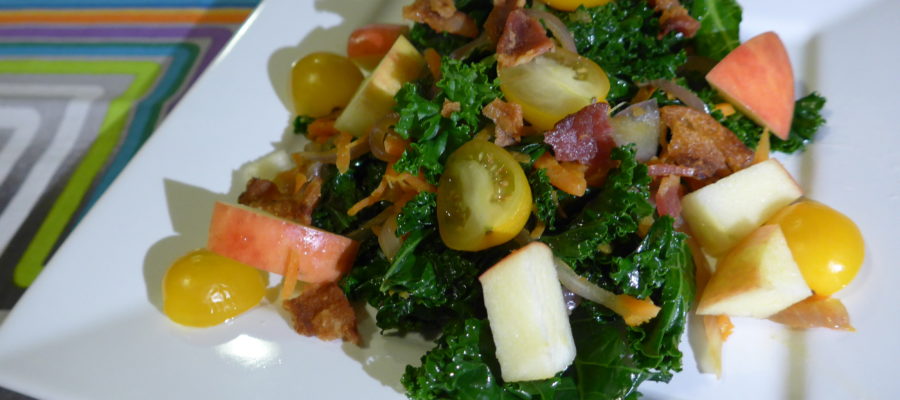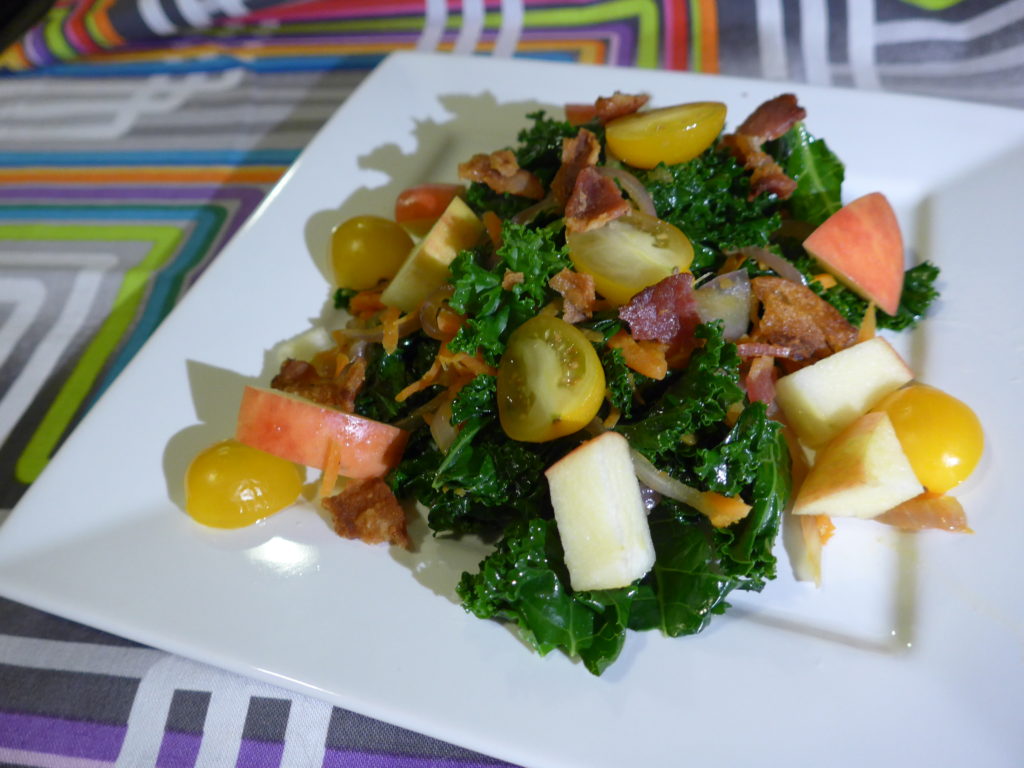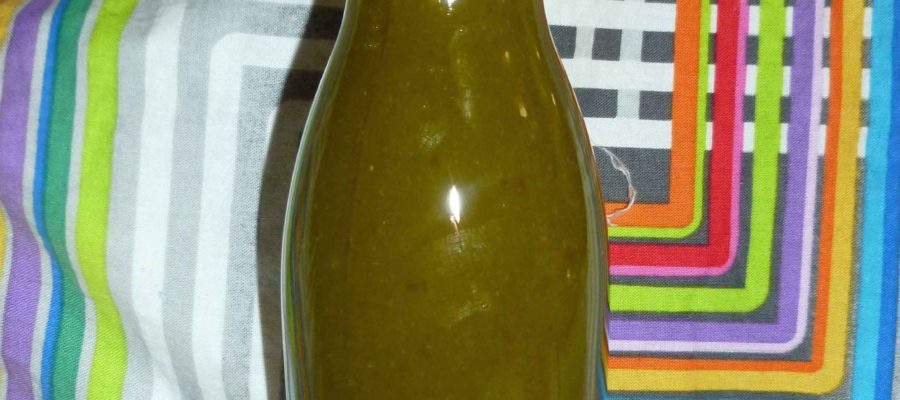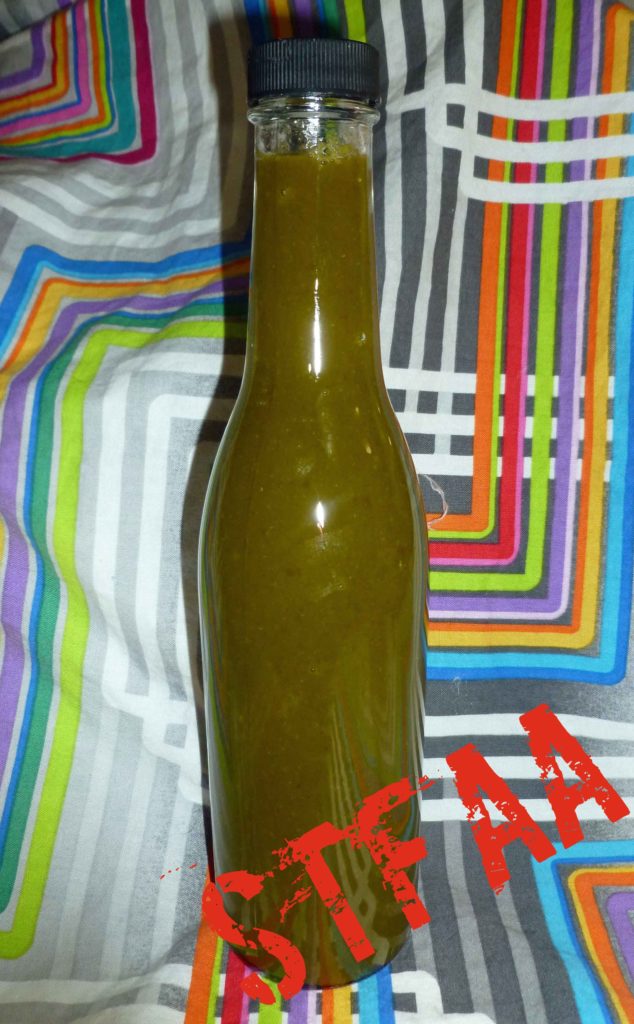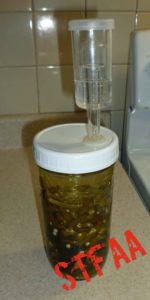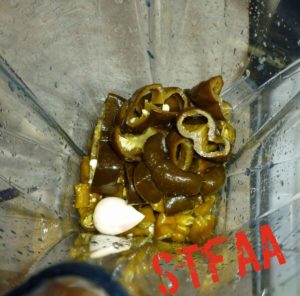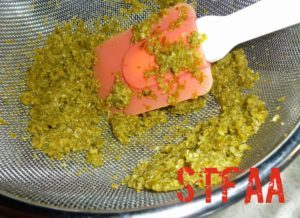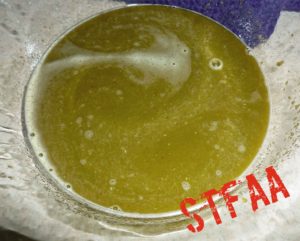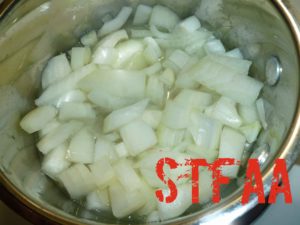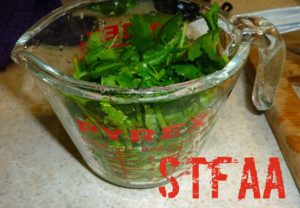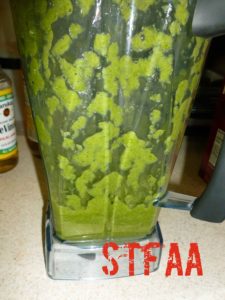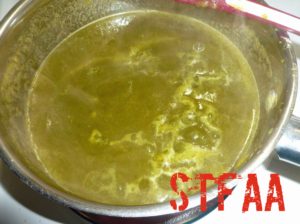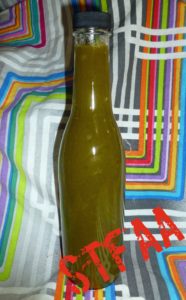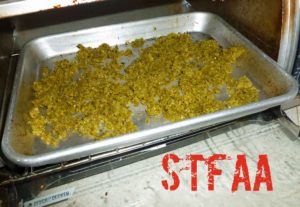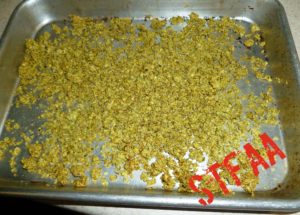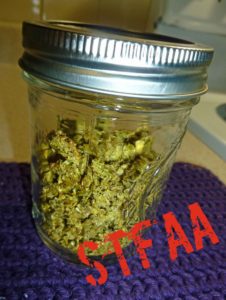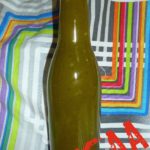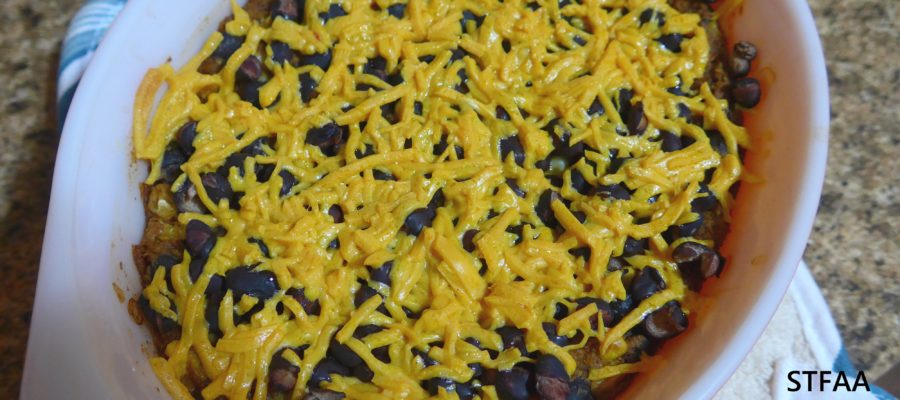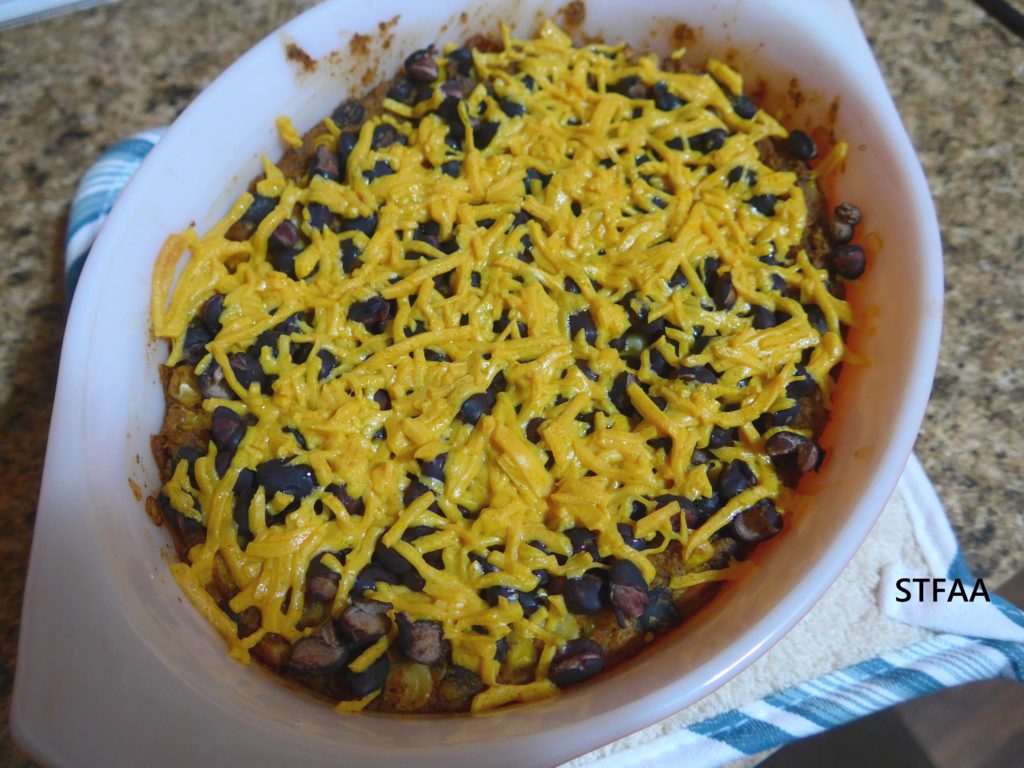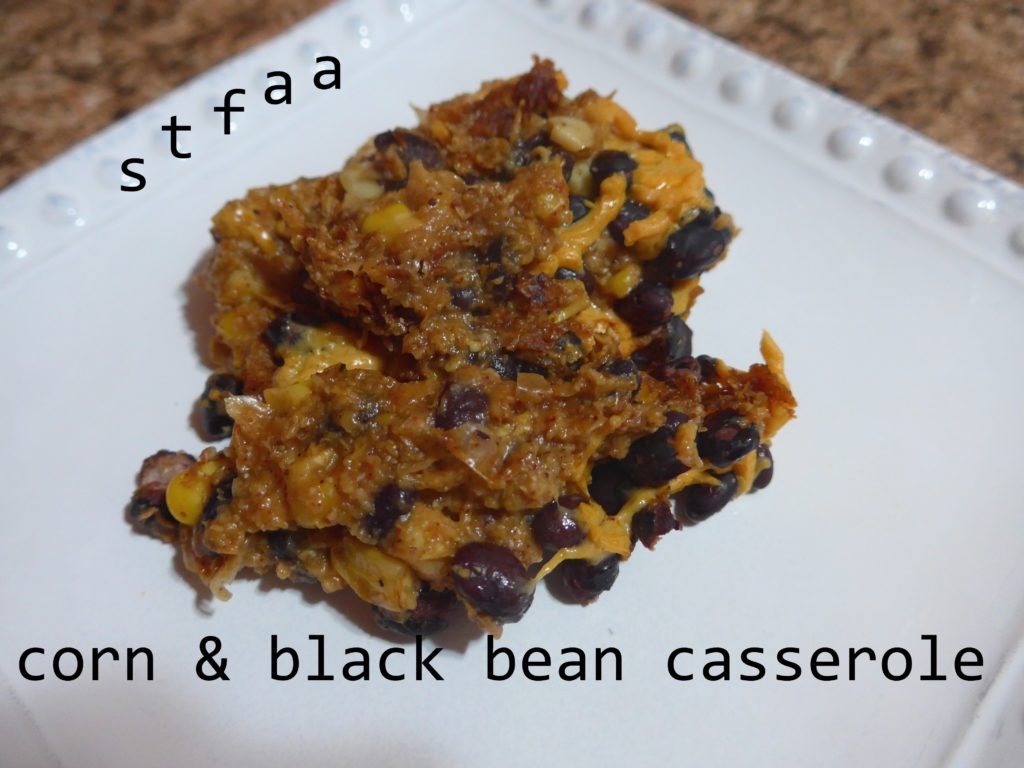I got this great 1966 cookbook at an estate sale that is just ground beef recipes.

Growing up in the 1980s in the midwest, I ate a lot of different preparations of ground beef. We never had hamburger helper out of a box, not that I remember, but there were definitely a few different preparations involving condensed soups. This cookbook just felt like childhood home. It was also the perfect way to follow up Denise’s last post about her meat grinder. As mine was my grandmother’s, I bought my meat for this recipe pre-ground.
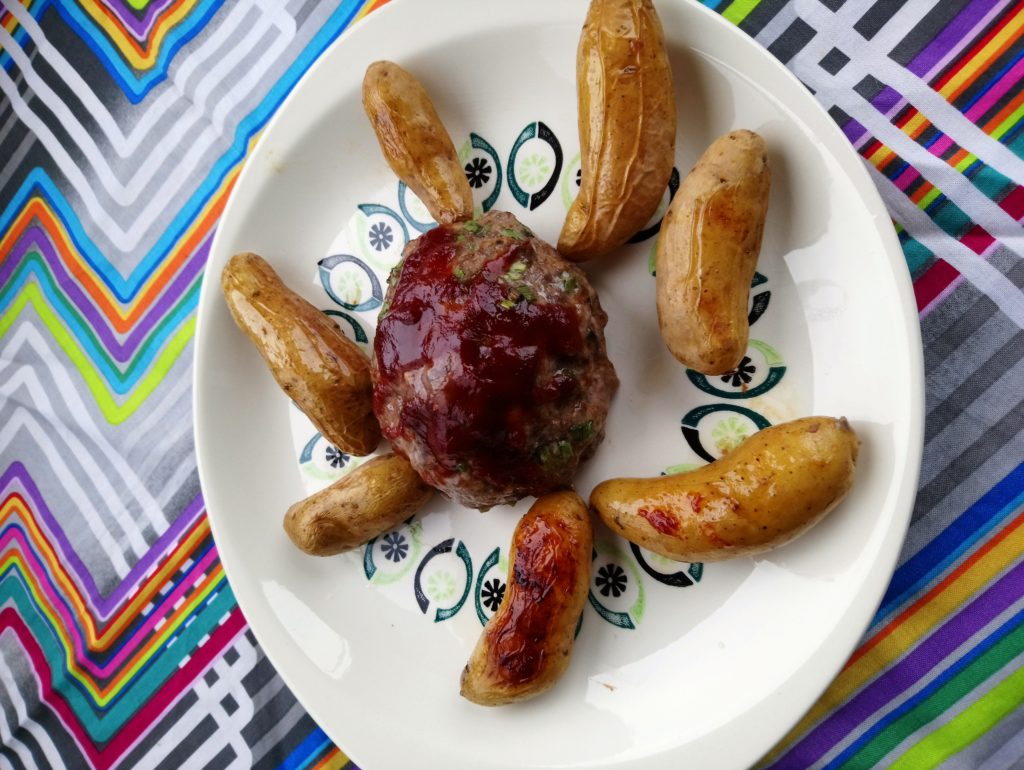
Now, this meatloaf omits the eggs and breadcrumbs that are common in so many recipes. I’ve used flax seed as an egg replacer and just skipped the breadcrumbs (my mom’s version was saltine crackers), and I’ve skipped the majority of seasoning in favor of a brilliant idea from this cookbook — dill pickle juice! I love pickles, but whether you make your own or buy them, you’re often left with juice. If you don’t want to drink it (and I don’t), do you just waste it? No. Make meatloaf. It’s better than using it as a marinade (I tried that, too.)
I make my meatloaf into two smaller loaves for quicker cooking times. Arrange the potatoes around the meat — they will cook in the fat. Yum.
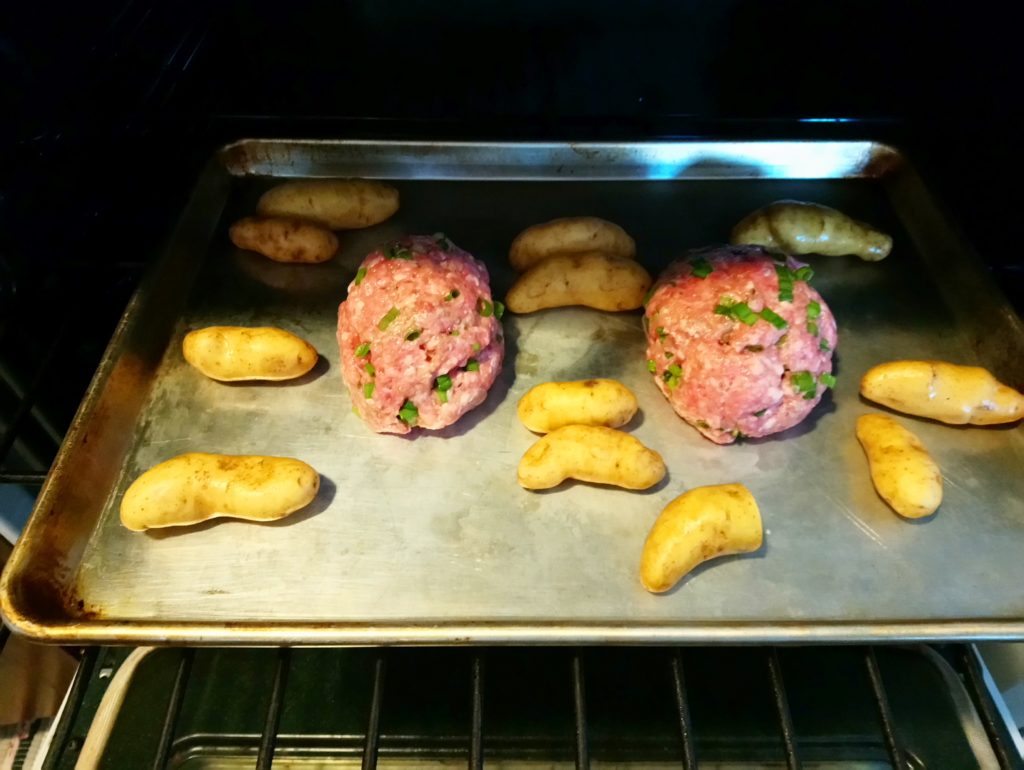
Notice: Trying to access array offset on value of type bool in /home/maryzahc/public_html/adultfoodallergies.com/wp-content/plugins/wp-ultimate-recipe/helpers/models/recipe.php on line 254
- 1/2 lb. ground pork
- 1/2 cup scallion tops chopped
- 1/3 cup dill pickle juice
- 1/2 T garlic olive oil
- 1 T ground flaxseed
- 2 T ketchup or barbeque sauce
- 1/2 lb. small potatoes washed
- Preheat the oven to 350F
- Add all ingredients except sauce and potaoes to a bowl and mix well. It seems to work best to use your hands, gently mixing until the mixture comes together.
- To reduce baking time and get more of the nice exterior of the meatloaf (my favorite part), I make two small meatloaves, which also leaves more space around them for the potatoes. Don’t grease the sheet — the meats have enough fat to cook the potatoes. I just use a half sheet pan, sturdy with sides to keep the grease contained.
- Bake for 30 minutes, uncovered. Then add 1 tablespoon of ketchup or barbque sauce to the top of each loaf and bake a final 10 minutes.
- Let it rest for 10 minutes before cutting. 1/2 a meatloaf is now about 1/4 lb, so about one serving.
Note: I think chia seed, ground, would likely work in this recipe, but I haven’t tested it. You can also skip the sauce on top if you wish.
